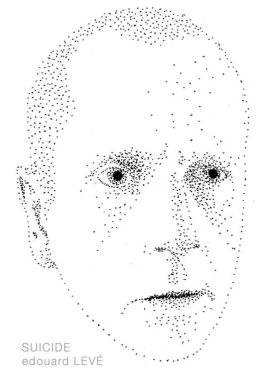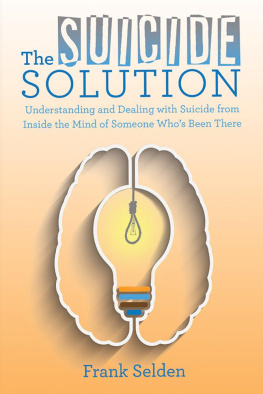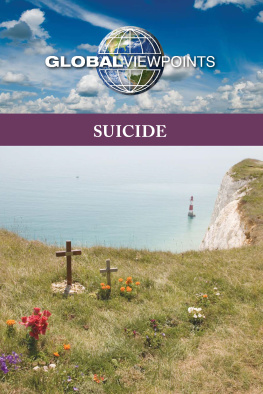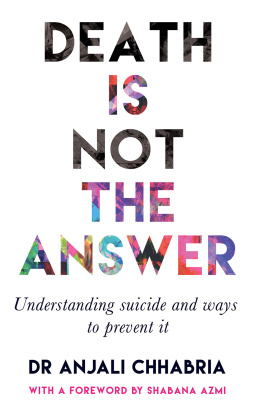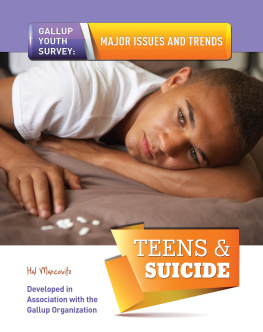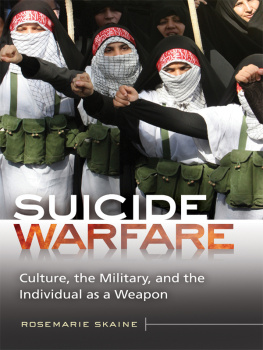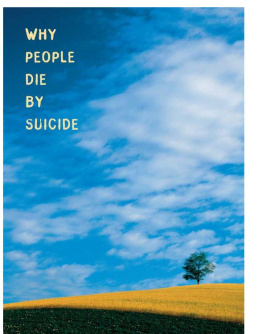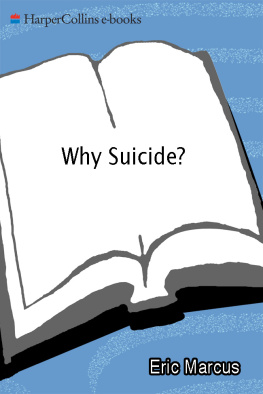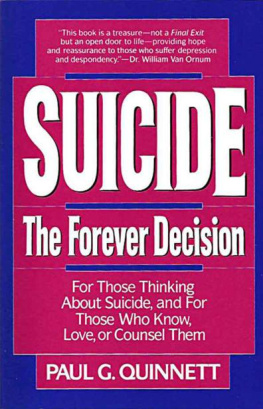UNDERSTANDING SUICIDE
Lucy Costigan & Anthony E. Walsh
Understanding Suicide
EXPOSING THE WORLD OF PAIN
WITHIN THE SUICIDE BOX

www.thesuicidebox.com
First published in 2015 by
CURRACH PRESS
55A Spruce Avenue,
Stillorgan Industrial Park,
Blackrock, Co. Dublin
Cover design by Helene Pertl/Currach Press
Cover images from the Biodiversity Heritage Library. Digitised by Smithsonian Libraries and Cornell University Library | www.biodiversitylibrary.org; William C. Hewitson, Illustrations of New Species of Exotic Butterflies Vol 01; Jan Sepp, Surinaamsche Vlinders; William Lewin, The Papilios of Great Britain.
Origination by Currach Press
Printed in Ireland by SPRINT-Print Ltd
ISBN 978 1 78218 842 1
This publication is protected under the Copyright and Related Rights Act 2000. Conditional to statutory exceptions, no part of this work may be reproduced without the express permission of the publisher.
The moral rights of the authors have been asserted.
Copyright 2015, Lucy Costigan & Anthony E. Walsh
To those who live and grapple with the emotional pain of feeling pressured and inauthentic because of life experiences that caused trauma or a loss of self-love. To all families who suffered the overwhelming loss of a loved one who died by suicide. To those who could no longer withstand the pain and mistakenly saw the world as being better off without them. To you, the reader, that you will embrace and empathise with what this book espouses and join us on this road less travelled. May you all find some understanding, comfort and hope within these pages.
Foreword
I welcome this publication, which contributes to the debate about suicide. This debate is important to obtain an understanding of the complexities around suicide and the complexity of the decision to take ones life.
The journey to suicide is multifaceted. It is influenced by several interacting factors social, personal, psychological, cultural, biological, environmental and spiritual. The World Health Organisation (2014) in its recent report Preventing Suicide: A Global Imperative highlights the need to have strategies to target vulnerable groups. These groups include refugees, and migrants, persons bereaved by suicide, the homeless, prisoners, lesbian, gay, bisexual and transgender people, etc. Those who are victims of sexual violence and child sexual abuse are especially vulnerable. What causes suicide? Is it because of poverty, unemployment, breakdown of relationships, or depression or other mental disorders, an impulsive act or is it due to the disinhibiting effects of alcohol or drugs? I feel that this book may help us all develop a broader understanding of what causes suicide.
Stigma surrounding mental disorders and suicide means many people are prevented from seeking help. Stigma is one of the most pervasive barriers to seeking help for mental health problems and suicide ideation. It leads to people avoiding living, socialising, working, renting or obtaining employment. It causes low self-esteem, a sense of isolation and hopelessness.
The stigma that surrounds mental, psychological and emotional ill-health must be removed. Raising community awareness and breaking down taboos and stigma are important means of making efforts to prevent suicide.
There are many misconceptions surrounding incidents of suicide. One of the harshest realities for the bereaved family left behind is the admission that their loved one found life too painful and came to the conclusion that suicide was the only way out. But there should be no denying the fact of the death. We need to call it what it is: suicide. Yet in this current publication, suicide is viewed as the extremity of human pain, and we are reminded that we are all united in experiencing pain.
Those who die by suicide do not want to die, but they just cannot bear to live in the incredible pain that they feel. It is very important for people to hear this message. People who die by suicide want to live as much as anyone else, but living becomes too painful.
Who is responsible for suicide prevention? While the responsibility for leadership lies with the state, civil society organisations and the general population can play a key role in reducing suicide and deliberate self-harm. Community organisations and other local services like the police, citizens information personnel, addiction counsellors, clergy, representatives of sporting organisations, teachers, parents, the suicide bereaved and members of the public all have a key role to play in reducing suicide. I sincerely welcome this book and congratulate Anthony Walsh and Lucy Costigan on their contribution to this important social health issue.
Dan Neville TD
President, Irish Association of Suicidology
Preface
Anthonys Story
Directly and indirectly I have been involved in twenty-eight suicides. I have spoken with many people who were contemplating suicide or had attempted suicide. One event in particular stands out. It was during the time I worked in the prison service. It was night-time and for some inexplicable reason I was drawn to look in on one particular inmate. I walked up the landing and peered into Martins cell. I witnessed what appeared to be Martins last movements. I unlocked the door and rushed into the cell, encircled Martins legs and lifted him upwards while shouting for help. I later heard that it had been touch and go but that Martin had pulled through. Many years later as I was strolling along a street in Dublin I met Martin as he walked beside his partner who was wheeling their lovely young daughter. He asked if Id have coffee with him while his wife went shopping. We chatted about many things, including his work that he really seemed to enjoy and his family that he obviously adored. One thing Ill always remember that he said: If you hadnt found me that night, none of this would have ever happened. Even my little daughter wouldnt be here now. His little girl sat happily playing with her toy completely oblivious of her miraculous existence.
My work with Living Links has brought me into direct contact with many families who have been bereaved by suicide. In every single situation, the families bereaved by suicide are devastated by their loss. In contrast to the distorted belief of those who attempt or complete suicide, there is always desolation, confusion and complicated grieving following a suicide. These and many other life experiences have raised my awareness of suicide and has brought me to try to contribute, at least, to reducing the unnecessary human pain that we consciously or unconsciously facilitate.
Lucys Story
The single event that brought the reality of suicide to my front door happened when I was seventeen. My best friend tried to kill himself one autumn night. Such was the stigma around suicide that his parents told no one, not even his older siblings. He was hospitalised for a few days without visitors. Everyone thought hed had a car accident. It was only later that he confided in me what hed attempted that night, and the stranger who had saved his life by happening upon his car in the middle of a forest and driving him to hospital. I felt devastated and shocked to the core; guilt and anger mingled with the sheer relief that he was still here, still sitting beside me. I couldnt understand why hed attempted such an extreme act. To me he was a hero, super intelligent, original, incredibly talented, witty and utterly lovable. Yet in his eyes he was a failure, not having reached his potential, feeling rudderless and not belonging anywhere. He confided that he felt numb inside. Hed never been allowed to express his true feelings so hed tried to bury everything. In school he had been ruthlessly criticised and physically punished for his defiant and rebellious spirit. At that time I had little understanding of how the mind or emotions work. During the weeks and months following my friends suicide attempt I fretted that he might try to take his life again. I worried that I couldnt stop him if he really chose to end his life. I was one of the lucky ones because I did get to see my friend grow and flourish, to discover ways of dealing with the world when storms battered his bow and bent his sails, as they inevitably do in all our lives.
Next page

